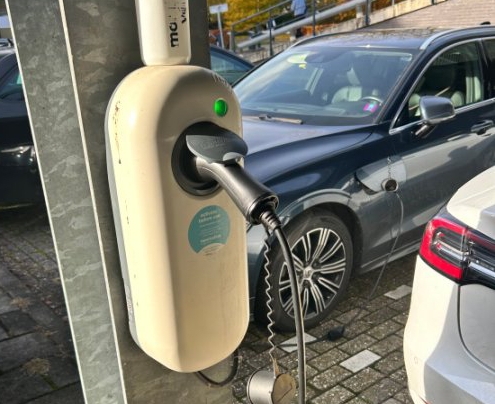10/13/2025
With the increasing maturity of new energy vehicle technology, electric mobility has become mainstream. However, extreme temperatures—whether in the scorching summer or the bitter cold of winter—pose challenges to power battery performance, charging efficiency, and range.
As an electric vehicle owner, it's crucial to master sound charging habits. The following are key considerations for charging and using your vehicle in both summer and winter.
The scorching August heat presents a severe test for power batteries and charging systems. A scientific approach is essential to ensure safety and efficiency.
Key Concern: Can I Use the Air Conditioner Inside My Car?
A key concern for many car owners is: Can I sit in my car with the air conditioning on while charging?
Principle: Yes, but strongly not recommended.
Analysis: Summer temperatures are already high, and high-power fast charging can further elevate the power battery temperature. If high-power appliances like the air conditioner and audio-visual system are turned on during this time, the battery load will increase, leading to the following issues:
1. Choose the right location and time of day
2. Pay attention to charging timing and environment.
Winter, especially in extremely cold regions, significantly affects the chemical properties of power batteries, primarily manifesting as slower charging speeds and reduced range.
Core Principle: Low temperatures reduce battery activity.
Lithium Ion Cold Sensitivity: The charging process of a lithium-ion battery involves the movement of lithium ions between the positive and negative electrodes. The lower the temperature, the more viscous the electrolyte becomes, reducing the chemical activity and movement of lithium ions. This results in slower charging efficiency and even difficulty in achieving a full charge.
Impact on Battery Life: Low temperatures also increase the resistance to lithium ions moving back to the positive electrode, reducing available charge and typically reducing battery life by 10% to 20%.

1. Maintain a Suitable Charging Temperature
2. Develop a Habit of Shallow Charges and Discharges
Avoid Deep Battery Depletion: Battery life degrades more significantly in winter, so avoid over-discharging the battery. It's recommended to adhere to the "shallow charge and discharge" principle. When the battery state of charge (SOC) drops to 30%-50%, recharge immediately to prevent battery breakdown due to rapid battery depletion in extreme cold weather.
3. Maintenance of Idle Vehicles: If your electric vehicle is parked for an extended period due to cold weather, it is recommended to fully charge it before parking. If the vehicle is parked for extended periods, it should be charged regularly to prevent the battery from becoming depleted and causing a permanent decrease in capacity.
Whether facing the heat of summer or the cold of winter, safe and efficient EV charging relies on adopting good habits. Your high-quality nexway EV Charger and Charging Connector are designed to perform reliably under varying conditions, but smart use is key:
The following are our popular EV charging products that you may be interested in. If you have any questions, please feel free to contact us, and our specialists will answer within 24 hours.